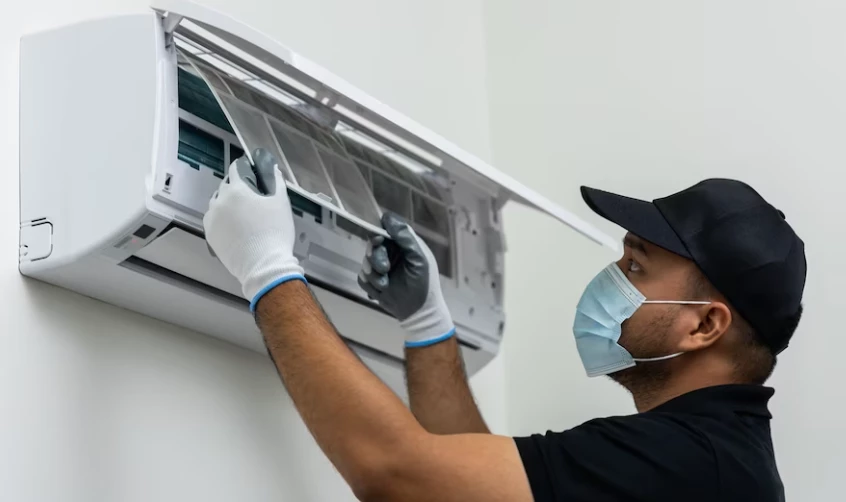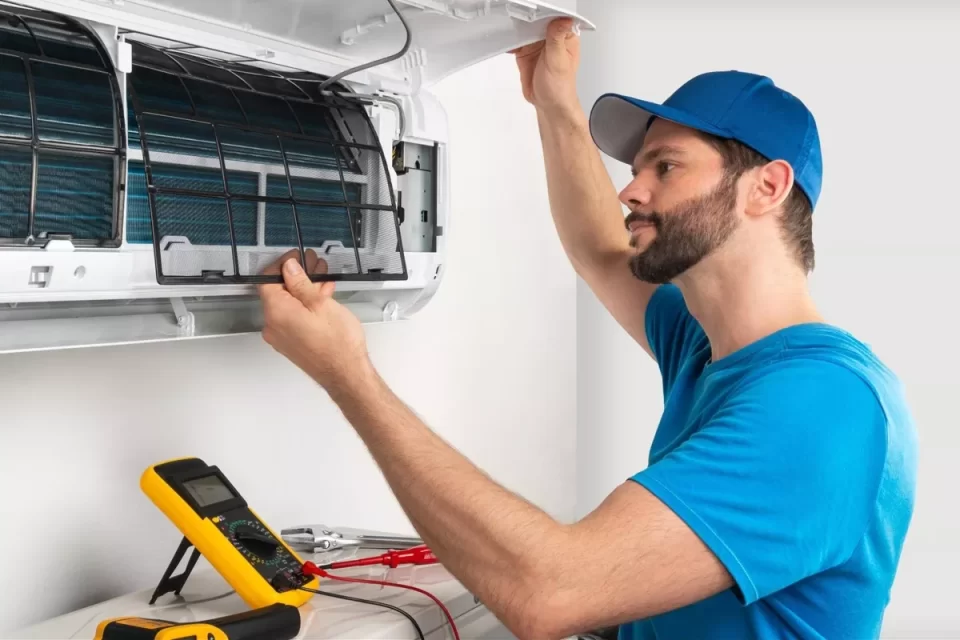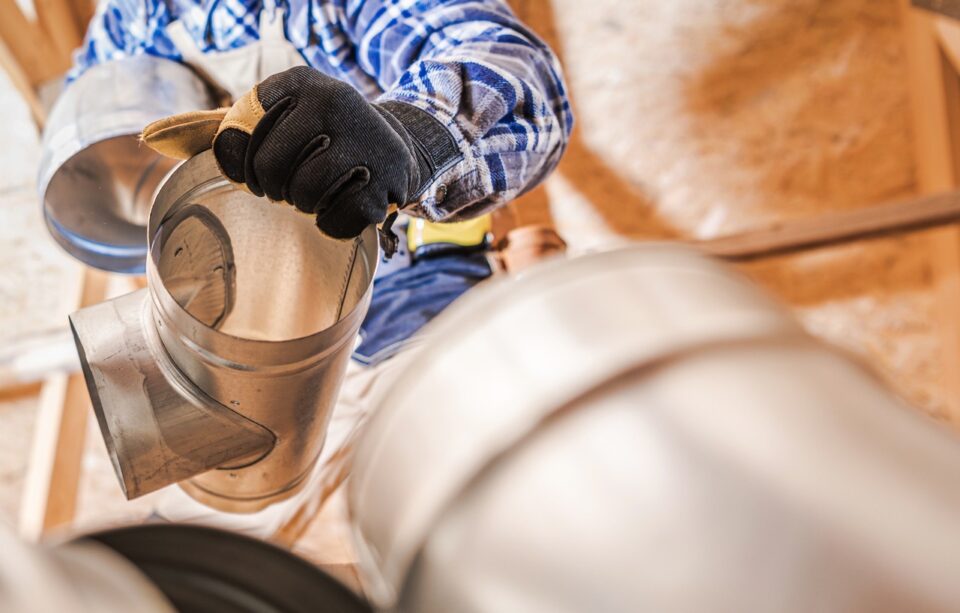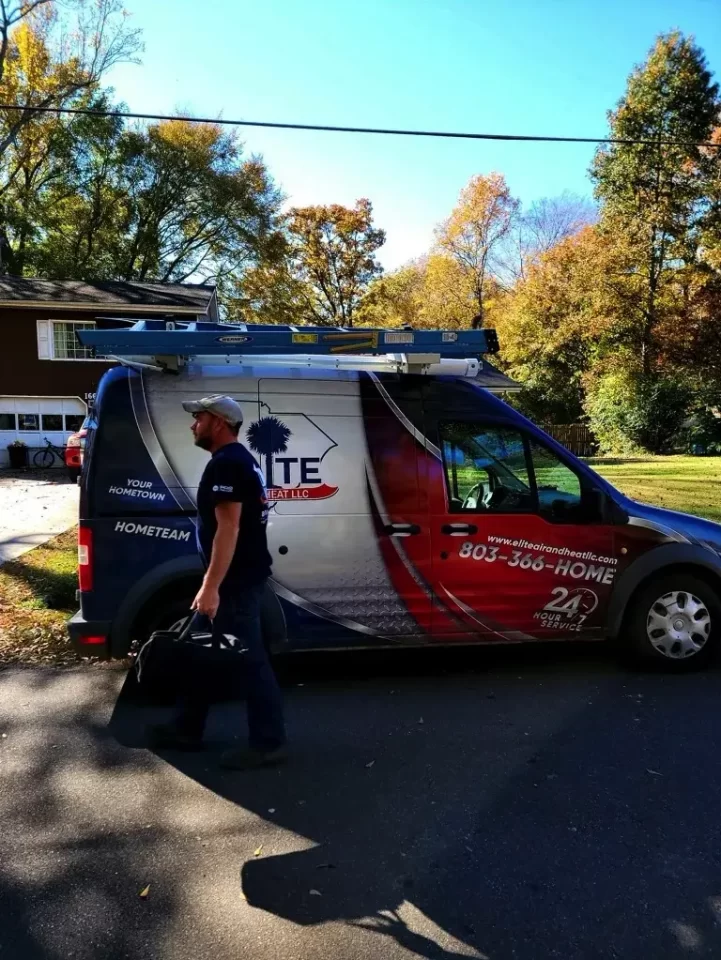Power bills keep climbing, and comfort still matters on the hottest afternoon. That’s where ductless AC earns a closer look. These small, quiet units cool the rooms actually used, not empty hallways, so energy isn’t wasted pushing air through leaky ducts.
Installation is quick, zoning is simple, and filters catch plenty of dust and allergens. You set each room to the temperature you want, and the inverter only works as hard as needed. Less energy in, more comfort out, fewer thermostat fights. For many homes, ductless is a practical move toward steady comfort that also trims the home’s footprint.
How Do Ductless Mini Splits Impact Energy Consumption?
Think of conventional central air like a charter bus: one big engine, one route, everyone gets the same temperature whether they want it or not. Ductless mini splits are more like a fleet of nimble hybrids—zoned, responsive, and excellent at sipping energy instead of gulping it.
Here’s where the energy magic comes from:
- No duct losses.
Ducts can leak 20–30% of conditioned air into attics and crawlspaces. Ductless systems move refrigerant to small indoor heads, skipping the duct penalty altogether. That’s like plugging the holes in your wallet. - Inverter-driven compressors
Old-school systems cycle on/off—slam the gas, slam the brakes, repeat. Mini splits modulate speed to match the exact load in real-time. Instead of sprinting and resting, they jog efficiently. Continuous, low-power operation is where the big savings live. - Right-sized delivery every minute
Central systems get sized for the worst July afternoon. The rest of the year, they’re oversized and inefficient. Ductless units scale output up or down for the room they serve, so you’re not cooling the whole house to fix a warm home office. - Smarter staging
With multiple indoor heads, you can run only what you need. Is the guest room empty until Thanksgiving? Keep that zone at “low and steady” while living spaces get targeted comfort.
The bottom line: ductless systems reduce waste in three places—distribution (no ducts), operation (inverters), and scope (zones). Less waste equals less energy, and less energy equals less money spent on every hour of cooling. It’s not flashy; it’s just relentlessly effective.
Bonus efficiency wins you can feel:
- Faster cool-down because the conditioned air is produced and delivered right where you sit.
- Lower humidity thanks to long, steady runtimes that give coils time to wring out moisture.
- Fewer hot/cold rebounds since the system doesn’t “coast” off after overshooting the setpoint.
What are the Comfort Benefits Of Zoned Cooling With Ductless AC?
The kind you notice when you plop on the sofa after mowing the lawn and the room just gets it. Zoned ductless systems let comfort become personal instead of one-size-fits-none.
Why zoning turns comfort from okay to “oh wow”:
- Room-by-room setpoints
Your living room can be 72°F while your bedroom prefers a breezy 74°F. The kitchen (hello, oven heat!) gets its own plan. Suddenly, you’re not negotiating with the entire house to make one room right. - Whisper-quiet operation
Indoor heads run in the 19–30 dB range—library quiet. You’ll hear the ice clink in your glass before you hear the unit. Movie nights and Zoom calls stay drama-free. - Targeted airflow
Adjustable louvers and indoor head placement let you aim the comfort. Point the airflow to the reading nook, not straight at your face. The system serves you, not the other way around. - Goodbye, duct roulette
Ever seen one register blast like a wind tunnel while another sighs politely? Without duct balancing drama, each zone gets what it needs, consistently. - Dehumidification that actually works
Long, low-speed operation dries the air more effectively than short, high-speed bursts. Your home feels cooler at the same setpoint because moisture isn’t hogging the spotlight.
Everyday wins you’ll appreciate:
- The garage conversion finally feels like part of the house, not a seasonal storage unit.
- The upstairs isn’t a punishment in July.
- The nursery stays steady even when the rest of the home swings.
Zoned comfort is the HVAC equivalent of tailored clothing—you stop tolerating “close enough” and start enjoying “fits just right.”
Which Is More Environmentally Friendly Ductless Or Central Air?
It’s fair to ask whether ductless systems are better for the planet or just better for your utility bill. The honest answer: both can be eco-conscious when designed and installed well—but ductless has structural advantages that point green.
Ductless eco-edge, explained:
- Lower energy demand = lower emissions
Most of our electricity grid still involves fossil fuels. Every kilowatt avoided is carbon you didn’t pull from the earth and send skyward. Mini splits’ efficiency directly translates to fewer emissions per hour of comfort. - No duct leaks into unconditioned spaces
Cooling a 120°F attic is the opposite of green. By sidestepping ducts, you avoid a major source of waste. - Right-sized refrigerant circuits
With modern installation practices and proper line lengths, ductless systems minimize charge volumes and potential leak points. Good installers pressure-test, evacuate correctly, and register warranties—small steps that matter for refrigerant stewardship. - Electrification-ready
Because mini splits are high-efficiency electric systems, they dovetail nicely with a future that includes rooftop solar, battery storage, and cleaner grids. As the grid gets greener, your comfort gets greener automatically.
Where central air can still be “green enough”:
- If your ducts are inside conditioned space (e.g., a properly sealed and insulated basement) and are tight as a drum, a high-SEER2 central system can be quite efficient.
- If your home’s layout truly benefits from a single, balanced system and you’ve invested in top-tier building envelope improvements, central air can keep pace.
But in typical homes—especially with ducts in attics or crawlspaces—ductless wins the eco-match on fewer assumptions and fewer “ifs.” Less waste. Less runtime. More comfort for fewer watts. In sustainability math, that’s the hat trick.
What is the Long Term Financial Advantage of Ductless Systems?
Let’s open the spreadsheet (don’t worry, just the fun columns). Ductless isn’t always the cheapest to install—particularly for multi-zone setups—but the total cost of ownership often favors mini splits, especially in real-life houses with bonus rooms, additions, or ductwork that belongs in a museum.
Where the money goes—and stays:
- Energy savings you can bank on
No duct losses + inverter efficiency + zoning = lower monthly bills. Over 5–10 years, that delta stacks up, especially in hot climates or homes that run A/C nine months a year. - No duct rehab bills
Aging ductwork is a hidden cost bomb: sealing, replacing crushed flex, adding returns, re-insulating, and rebalancing. Ductless systems leapfrog those expenses. - Longevity and maintenance
Mini splits have fewer moving parts per zone and avoid the constant high/low cycling that wears out traditional compressors. Routine maintenance focuses on filter cleaning and coil hygiene—simple, predictable, affordable. - Room-by-room expansion
Start with the worst offender (that upstairs oven of a bedroom) and add zones as budget allows. Phased comfort is a financial strategy central air just can’t match. - Resale attractiveness
Homebuyers love a calm, efficient house with quiet bedrooms and a cool bonus room. “Ductless zoned comfort” reads as modern and low-drama—two qualities that sell.
Hidden savings most people miss:
- Productivity and livability. A home office that stays comfortable can be the difference between working at your desk and fleeing to the kitchen table.
- Targeted conditioning. Conditioning just the rooms in use during evenings can chop runtime without sacrificing comfort.
- Heat pump flexibility. Many ductless systems provide efficient heating, too—slashing gas or resistance heat costs in shoulder seasons.
Is ductless always the cheapest path on day one? Not necessarily. Is it often the best financial decision over the life of the equipment? In many homes, yes—because it saves money where you actually spend it: every hour you need comfort.
A Few Practical Myths—Busted Quickly
- “Those wall cassettes are ugly.”
Have you seen the new slim-line heads, recessed ceiling cassettes, or short-ducted “concealed” units? You’ve got options beyond the classic wall unit. - “They can’t handle whole houses.”
Multi-zone systems scale beautifully, and in many layouts they outperform central by delivering the right amount of cooling exactly where it’s needed. - “Maintenance is complicated.”
Clean filters, periodic coil cleaning, check condensate. It’s not rocket science; it’s adulting. - “They’re only for homes without ducts.”
They’re perfect for homes without ducts—but they’re also the best answer for additions, bonus rooms, and to fix chronic hot/cold zones without tearing open ceilings.
Where Ductless Shines Brightest (Real-World Scenarios)
- The bonus room blues.
Over-garage spaces live a tough life. A dedicated mini split turns them from seasonal storage into year-round living. - Historic or design-forward homes.
If you’d rather not carve bulkheads for ducts, ductless preserves architecture and keeps the vibe intact. - Multi-generational living.
Different comfort preferences? Zoning lets everyone be happy—no thermostat civil wars. - Hybrid strategies.
Keep central air for main living spaces, add ductless for the extreme rooms. It’s a “best of both worlds” approach that often wins the math and the comfort.
Ready to Try Comfort That Thinks Before It Blows?
Our team designs ductless solutions that feel invisible but make a daily difference:
- A room-by-room heat load analysis (no guesswork)
- Options for wall, ceiling, and concealed heads to match your style
- Energy projections you can actually understand, not nap through
- A phased install plan if you’d like to start with the most uncomfortable room and expand later
- Post-install tuning for whisper-quiet, even comfort—plus a maintenance plan that’s simple and sane
Comfort shouldn’t be loud, wasteful, or bossy. Book your consultation with Elite Air & Heat LLC and experience the kind of smart, sustainable comfort that just quietly works—day after day, season after season.




